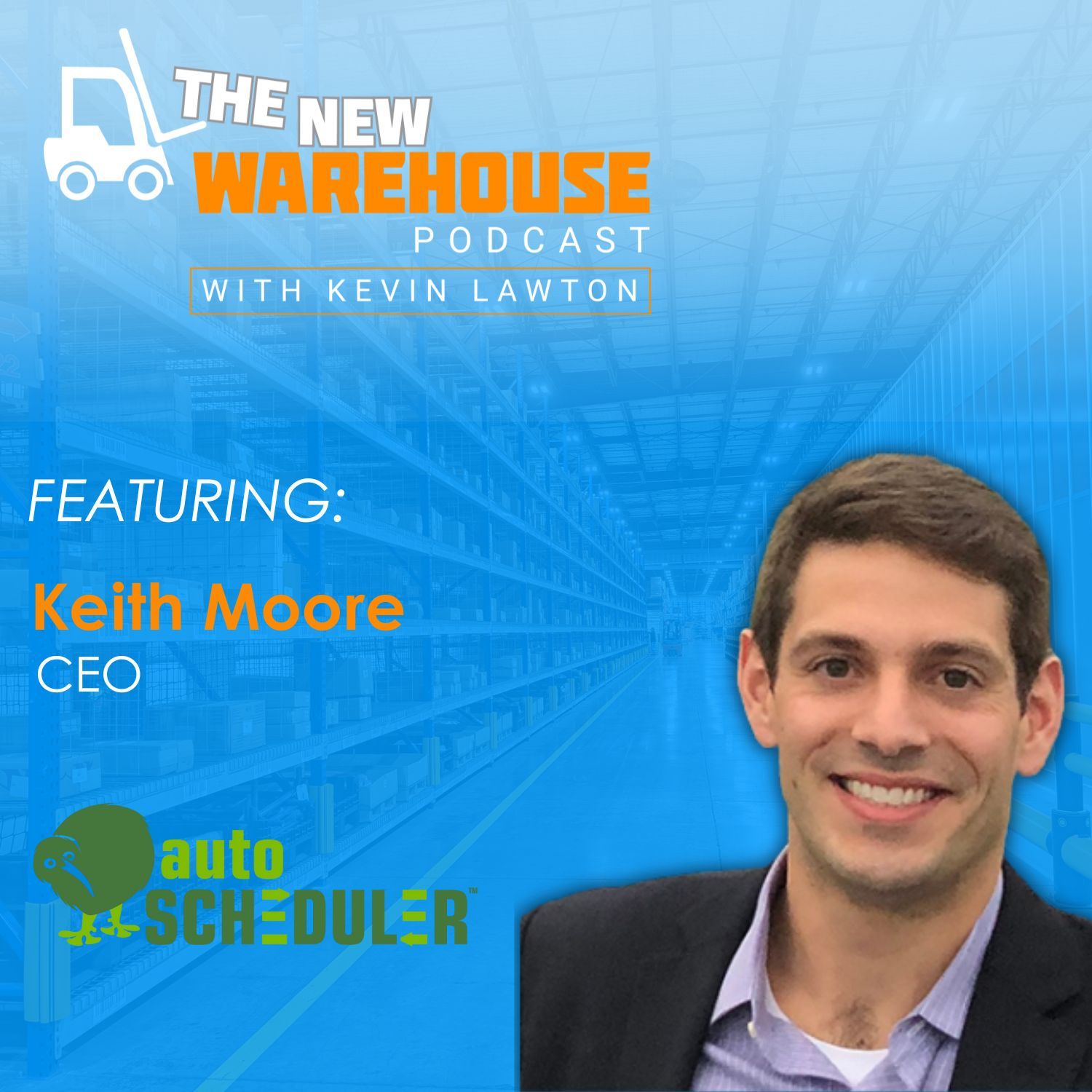
596: Warehouse Orchestration with AutoScheduler
In this episode of The New Warehouse Podcast, Keith Moore, CEO of AutoScheduler AI, shares valuable insights into how warehouse orchestration and artificial intelligence are transforming distribution operations. AutoScheduler focuses on harmonizing data from diverse warehouse systems, applying advanced optimization techniques, and providing analytics to enhance warehouse efficiency and productivity.
Moore examines how the landscape of warehouse operations is evolving, with roles specifically designed to address growing complexities through orchestration. He also clarifies common misconceptions about AI, highlighting the practical ways it can significantly improve operational effectiveness by automating complex decision-making processes.
Warehouse Orchestration: The New Normal
Moore defines warehouse orchestration as the coordination of disparate data systems, such as warehouse management systems (WMS), inventory management, and yard management, into a unified view. “Continuous improvement with a technology angle is moving into orchestration,” he explains, highlighting the new specialized roles emerging in this space.
Companies now recognize that having a dedicated orchestration function is vital because warehouse managers often juggle information across multiple, fragmented systems. Kevin and Moore humorously suggest these new roles could aptly be called “warehouse conductors” or “maestros,” given their pivotal role in harmonizing operations.
AI’s Real Role in Orchestrating Warehouses
Addressing the AI hype, Moore emphasizes the practical applications of artificial intelligence within warehouse settings. “Generative AI struggles in a warehouse because warehouses have a particular set of data,” Moore notes, clarifying that generative AI’s strengths lie outside the structured data typical of warehouses.
Instead, effective AI in warehousing encompasses predictive analytics and decision optimization, which determine optimal inventory flows, labor utilization, and productivity enhancements. Moore cites specific AI applications, such as optimizing pick routes, dynamic slotting, and yard management, as prime examples where AI delivers a significant return on investment (ROI).
Navigating AI Integration: The Practical Steps
Integrating AI into warehouse operations isn’t as daunting as it seems, Moore asserts, outlining critical steps to ensure successful implementation. He advises operations leaders to first confirm whether a human with sufficient time and data could theoretically solve the problem before applying AI.
Before launching any AI initiative, Keith says you need to ask two key questions: First, “if you gave a person all the data and unlimited time, could they solve the problem?” If not, it’s not the right fit for AI. Second, “Can you map your data directly to a specific process in your operation?” Without that connection, even the best models will fall flat. AI only works when you have both a solvable problem and a clear path from data to decision.
He also shares how businesses that invested in foundational data harmonization five years ago are significantly ahead, underscoring the value of clean, structured data in achieving operational goals.
Key Takeaways on Warehouse Orchestration
- Warehouse orchestration integrates fragmented data systems to streamline operations.
- Specialized orchestration roles are becoming common, reflecting the complexity of modern warehouses.
- Practical AI applications include optimizing pick routes, dynamic slotting, and predictive analytics.
- Precise data-process mapping is essential before integrating AI.
- Data harmonization significantly boosts the effectiveness and return on AI investments.
Listen to the episode below and leave your thoughts in the comments.
Guest Information
For more information on AutoScheduler, click here.
To connect with Keith on LinkedIn, click here.
For more information about warehouse orchestration, check out the podcasts below.
494: Supply Chain Orchestration with Brian Gaunt of DHL

User-Friendly WMS from SnapFulfil Boosts 3PL Efficiency
[…] 596: Warehouse Orchestration with AutoScheduler […]
Fragmented Warehouse Systems: EPG’s Unified Solutions
[…] 596: Warehouse Orchestration with AutoScheduler […]